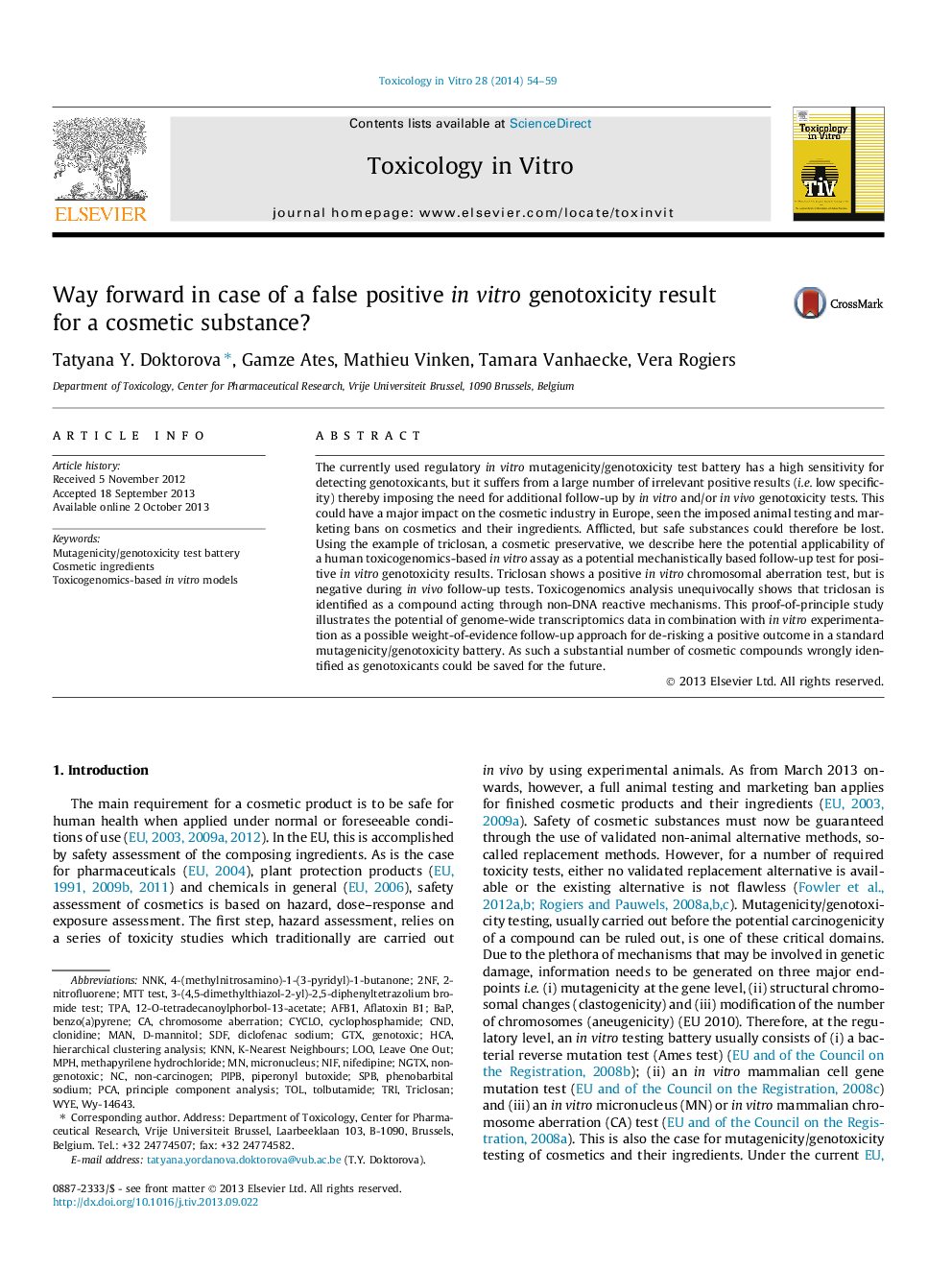| Article ID | Journal | Published Year | Pages | File Type |
|---|---|---|---|---|
| 5861999 | Toxicology in Vitro | 2014 | 6 Pages |
Abstract
The currently used regulatory in vitro mutagenicity/genotoxicity test battery has a high sensitivity for detecting genotoxicants, but it suffers from a large number of irrelevant positive results (i.e. low specificity) thereby imposing the need for additional follow-up by in vitro and/or in vivo genotoxicity tests. This could have a major impact on the cosmetic industry in Europe, seen the imposed animal testing and marketing bans on cosmetics and their ingredients. Afflicted, but safe substances could therefore be lost. Using the example of triclosan, a cosmetic preservative, we describe here the potential applicability of a human toxicogenomics-based in vitro assay as a potential mechanistically based follow-up test for positive in vitro genotoxicity results. Triclosan shows a positive in vitro chromosomal aberration test, but is negative during in vivo follow-up tests. Toxicogenomics analysis unequivocally shows that triclosan is identified as a compound acting through non-DNA reactive mechanisms. This proof-of-principle study illustrates the potential of genome-wide transcriptomics data in combination with in vitro experimentation as a possible weight-of-evidence follow-up approach for de-risking a positive outcome in a standard mutagenicity/genotoxicity battery. As such a substantial number of cosmetic compounds wrongly identified as genotoxicants could be saved for the future.
Keywords
CNDnIFSPBMPHGTXNNKTOLPiperonyl butoxideCyclo12-O-tetradecanoylphorbol-13-acetateTRIHCABAPKNNSDF2NFtPAWy-14643phenobarbital sodium2-nitrofluorene4-(methylnitrosamino)-1-(3-pyridyl)-1-butanoneAFB1d-mannitolPCAMTT testAflatoxin B1chromosome aberrationBenzo(a)pyrenePrinciple component analysishierarchical clustering analysisTriclosanTolbutamidediclofenac sodiumCyclophosphamideNon-genotoxicLOOManCosmetic ingredientsMicronucleusk-nearest neighboursNifedipineGenotoxicclonidine
Related Topics
Life Sciences
Environmental Science
Health, Toxicology and Mutagenesis
Authors
Tatyana Y. Doktorova, Gamze Ates, Mathieu Vinken, Tamara Vanhaecke, Vera Rogiers,
